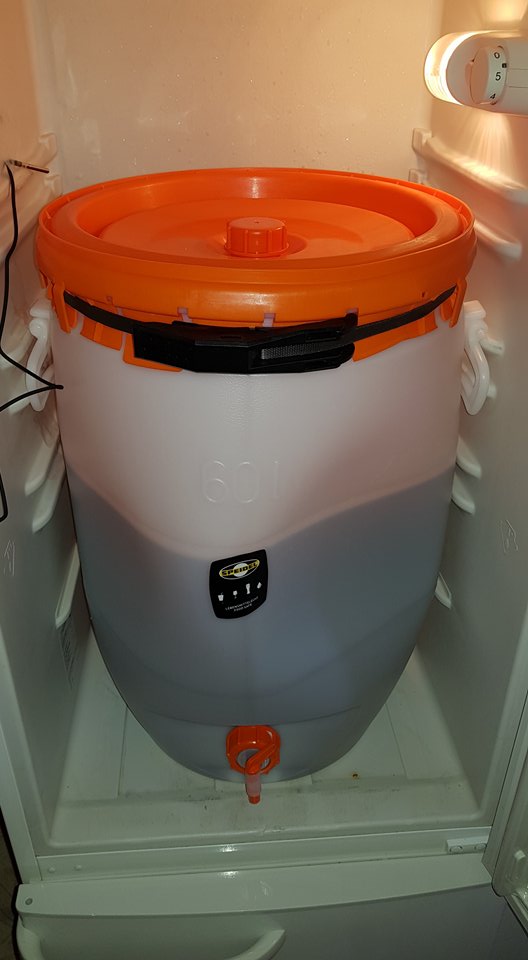Hi,
something really strange happened I don´t understand.
Summary: Brewed yesterday, my tapwater is 20 degress C (68 F). I cannot get the wort down to lager temps to pitch. So I purge the headroom with Co2 , sealed it and put it in der fridge to pitch today. Today I open the fridge and the fermenter kind of imploded.
Crystal clear, it´s the vacuum. BUT! I also do a sealed coldcrash in those Speidels regularly were it goes from 18 degrees C (64 F) down to 3 degrees C (37 F). Works like a charm every time! No implosion. This time, it only went from 20 degrees C (68 F) to 15 degrees C (59 F)...that´s next to nothing.
Why does it work when coldcrashing beer and not when cooling down wort?
The only idea I have: The wort was purged of almost all gases due to the prior boil and so it absorbed a lot more atmosphere in the fermenter than saturated beer. Can this be?
Best
Felix
Viele Grüße
Felix

something really strange happened I don´t understand.
Summary: Brewed yesterday, my tapwater is 20 degress C (68 F). I cannot get the wort down to lager temps to pitch. So I purge the headroom with Co2 , sealed it and put it in der fridge to pitch today. Today I open the fridge and the fermenter kind of imploded.
Crystal clear, it´s the vacuum. BUT! I also do a sealed coldcrash in those Speidels regularly were it goes from 18 degrees C (64 F) down to 3 degrees C (37 F). Works like a charm every time! No implosion. This time, it only went from 20 degrees C (68 F) to 15 degrees C (59 F)...that´s next to nothing.
Why does it work when coldcrashing beer and not when cooling down wort?
The only idea I have: The wort was purged of almost all gases due to the prior boil and so it absorbed a lot more atmosphere in the fermenter than saturated beer. Can this be?
Best
Felix
Viele Grüße
Felix

















































![Craft A Brew - Safale S-04 Dry Yeast - Fermentis - English Ale Dry Yeast - For English and American Ales and Hard Apple Ciders - Ingredients for Home Brewing - Beer Making Supplies - [1 Pack]](https://m.media-amazon.com/images/I/41fVGNh6JfL._SL500_.jpg)










